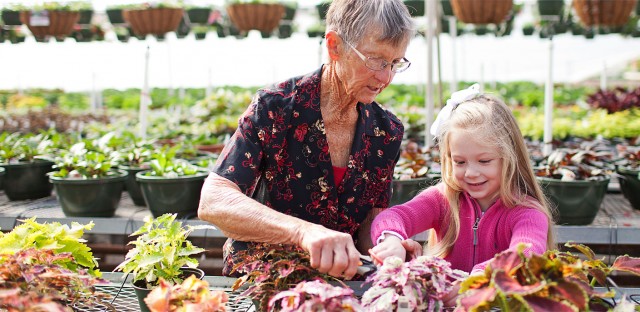Plants for Bees
Did you know that up to thirty percent of the world’s food supply can be attributed to bees? It true. Without their pollinating abilities, massive crop failures would be experienced across the world. You see, bees truly are a gardener’s best friend. Everyone knows that the honeybee has helped farmers for generations, but did you know that native bees, too, help pollinate our fruits and veggies, helping to yield a bountiful harvest? It’s true. We all can help a little by following a couple simple steps:
Organic Gardening: Simply put, pesticides kill both the good and bad. So, eliminating chemical pesticides is definitely a step toward a bee-friendly yard.
Plant for the Bees: As simple as it sounds, planting the right plants will help attract bees to your yard, thus providing them with pollen, a protein-rich food. To have an even greater impact, select one area of your yard and designate it as the “Bee Sanctuary,” if you will. You see, large masses of flowers in any one area are readily identified by bees and are sure to get more traffic. Creating a garden that blooms in spring, summer and autumn is ideal. Bee gardens usually take a more free-form approach, not quite as manicured as one might think.
Water: Equally important is a water source. Large water sources, like ponds and bird baths, can be difficult for bees to drink from due to their small size. Instead, fill a ceramic saucer with wet sand and sink it into the ground. Make sure to keep the sand wet; this “puddle-effect” will attract bees and butterflies alike.
Below are several flowering plants, annuals, perennials, as well as trees and shrubs that you can incorporate into your yard to help attract these buzzing creatures.
Perennials:
Yarrow, Achillea
Anise Hyssop, Agastache fueniculum
Bugleweed, Ajuga
Columbine, Aquilegia canadensis
Aster
False Indigo, Batisia
Bluebeard, Caryopteris
Purple Coneflower, Echinacea
Joe Pye Weed, Eupatorium
Blanket Flower, Gaillardia
Sunflower, Helianthus
Hosta
Lupine, Lupinus
Bee Balm, Monarda didyma
Catnip, Nepeta
Evening Primrose, Oenothera
Beard Tongue, Penstemon
Summer Phlox, Phlox paniculata
Gloriosa Daisy, Rudbeckia hirta
Mexican Sage, Salvia leucantha
Pincushion Flower, Scabiosa
Sedum, Sedum Autumn Joy
Goldenrod, Solidago
Lamb’s Ear, Stachys
Germander, Teucrium caradense
Mexican Sunflower, Tithonia rotundifolia spp.
Clover, Trifolium incarnatum
Ice plant, Delosperma cooperiAnnuals andHerbs:Basil, Sweet, Ocimum basilicum
Lavender, Lavandula angustifolia
Rosemary, Rosemaryinus officinalis
Borage, Borago officinalis
Lemon balm, Melissa officinalis
Thyme, Common, Thymus vulgaris
Dill, Anethum graveolens
Winter savory, Satureja montana
Hyssop, Hyssopus officinalis
Peppermint, Mentha x piperita
Coriander (cilantro), Coriandrum sativum
Fennel, Foeniculum vulgare
Bee balm, Monarda didyma
Catnip, Nepta cataria
Catmint, Nepeta spp.
Sage, Salvia officinalis
Chives, Allium schoenoprasum
Sage, Pineapple, Salvia elegans
Geranium, Scented, Pelargonium spp.
Marjoram, Majorana hortensis
Lemongrass, Cymbopogon, Cosmos, Garden, Cosmos bipinnatus
Daisy, Gloriosa, Rudbeckia hirta
Gomphrena, Gomphrena haageana
Marigold, Tagetes erecta
Verbena, Verbena x hybrida
Lantana, Lantana trifoliata
Salvia, Salvia splendens
Sunflower, Helianthus annuusTrees:
Fruit trees (apple, pear, etc.)
Golden Rain Tree, Koelreuteria paniculata
Southern Magnolia, Magnolia grandiflora
Weeping Cherries, Prunus sp. – yoshino, kwanzan
Crepe Myrtles, Lagerstroemia indica
Shrubs:
Holly, Ilex sp.
Rose, Rosa sp.
Rose of Sharon, Hibiscus syriacus
Summersweet Clethra, Clethra alnifolia
Sweetspire, Itea virginica
Hydrangea, Hydrangea sp.
Chaste Tree, Vitex agnus-castus
Butterfly Bush, Buddleia davidii
Bottlebrush, Callistemon sp.
Spiraea, Spiraea sp.
Happy Buzzing!
Heather W.
FairviewGreenhouses & GardenCenter




